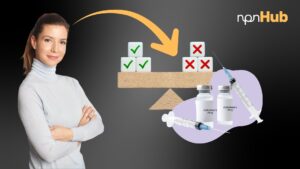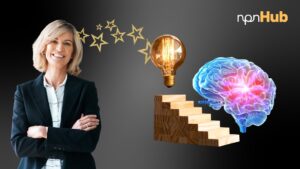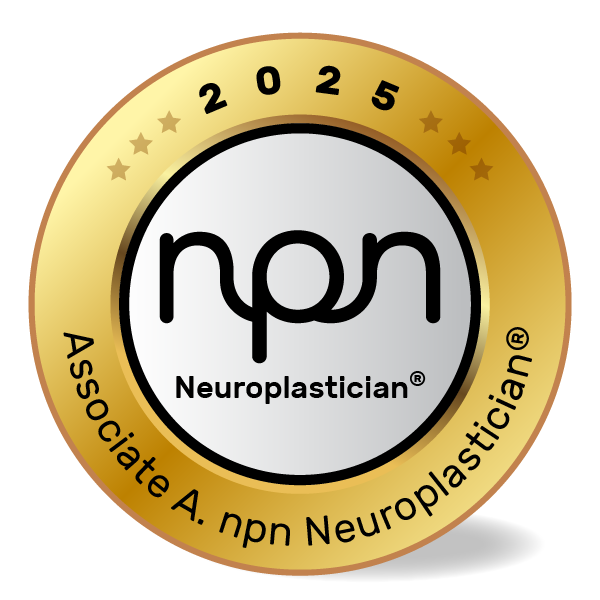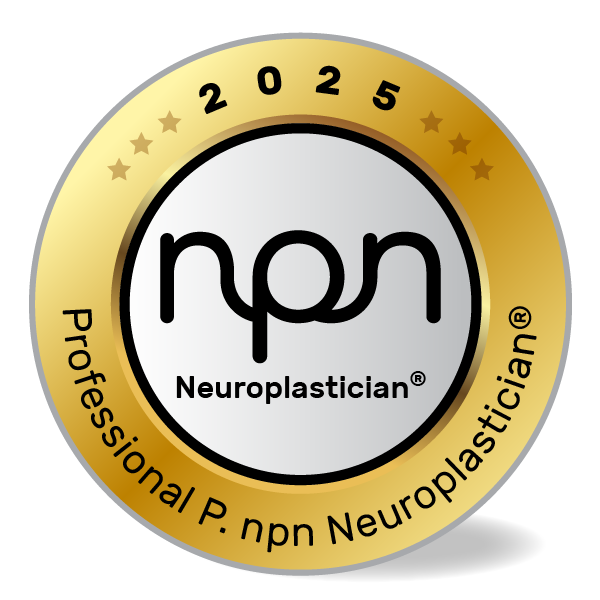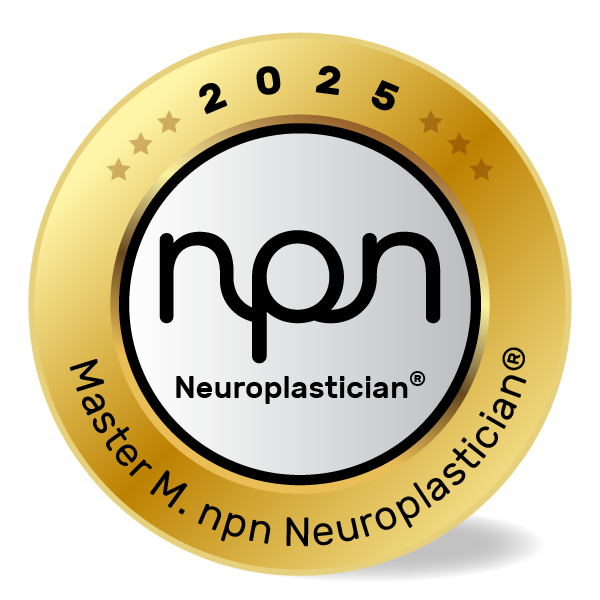How Brain-Body Integration is Reshaping the Way We Heal, Learn, and Thrive
npnHub Editorial Member: Catherine Knapp curated this blog
Key Points
- The brain and body are inseparable partners in cognition, emotion, and behavior.
- Emerging neuroscience reveals how gut health, movement, and interoception shape brain function.
- Understanding brain-body integration is key for practitioners focused on trauma, learning, well-being, and neurodiversity.
- The “BodyBrain” approach supports neuroplasticity, stress regulation, and cognitive performance.
- Professionals can use body-based strategies to optimize learning, emotional resilience, and healing outcomes.
1. What is the BodyBrain?
Imagine a practitioner supporting a client struggling with burnout. The client talks about brain fog, low energy, and constant stress. Instead of focusing solely on mental reframing, the practitioner introduces gentle somatic work – breathwork, grounding movements, even a shift in nutrition. Within weeks, the client’s clarity improves. They feel more present, more alert, more alive.
This isn’t just anecdotal – it reflects the essence of the “BodyBrain.”
The BodyBrain refers to the integrated relationship between the brain and body, where cognition, emotion, and regulation are shaped by physiological states. It dismantles the outdated view of the brain as a control tower operating separately from the body.
Harvard’s Mind Body Medicine Institute and researchers like Dr. Stephen Porges have led the charge in showing that physiological inputs – heart rate, gut bacteria, posture, breath – profoundly shape brain states and behaviors. The Polyvagal Theory, for example, reframes stress responses as adaptive bodybrain signals, not character flaws (Harvard Medical School, Stephen Porges).
2. The Neuroscience of the BodyBrain
During a trauma-informed coaching session, an educator noticed that a student shut down when asked to speak. Instead of pushing verbal responses, she encouraged the student to move, draw, and breathe. Gradually, language returned – alongside confidence.
This isn’t a therapeutic miracle. It’s brain-body integration in action.
From a neuroscience perspective, the brain isn’t just inside the skull – it extends through networks like the vagus nerve, the enteric nervous system (the “second brain” in the gut), and even skin-based sensory receptors. Interoception – the sense of internal body states – is crucial for emotional awareness and decision-making.
Studies by neuroscientist Dr. Antonio Damasio show that somatic markers (body-based signals) influence everything from risk-taking to empathy (Source).
Key brain areas involved include:
- Insular Cortex – processes interoception and visceral feedback.
- Anterior Cingulate Cortex (ACC) – integrates emotion, attention, and bodily regulation.
- Prefrontal Cortex – interprets and acts upon bodily signals.
- Amygdala – processes threat and safety cues in relation to physical state.
The BodyBrain model emphasizes that healing and learning are more effective when body states are regulated first.
3. What Neuroscience Practitioners, Neuroplasticians and Well-being Professionals Should Know About BodyBrain Integration
In a professional development workshop, a coach noticed that clients were mentally engaged but physically restless. Instead of pushing through content, she paused for grounding exercises – breathwork, movement, stillness. The shift was immediate: participants became focused, calm, and more receptive.
This approach – meeting the body to engage the brain – isn’t new. It’s just finally supported by science.
For neuroscience practitioners, understanding the BodyBrain is vital. It reframes emotional dysregulation, attention issues, or cognitive fatigue as not solely “brain-based” but deeply embodied. The vagus nerve, interoception, inflammation, and posture all inform cognition.
Unfortunately, many professionals still believe:
- Mindset changes alone are enough for regulation.
- Emotions are purely psychological, not physiological.
- Gut-brain science is fringe or irrelevant.
These myths prevent truly integrated care.
Here are three questions professionals frequently ask:
- How does gut health really impact mood and attention?
- Can body-based practices like somatics or breathwork rewire the brain?
- How do I incorporate interoception training into cognitive coaching?
Peer-reviewed research from the University of California, Stanford, and NIH now confirms that brain-body loops are not only real – they’re trainable and transformative (NIH Interoception Research).
4. How the BodyBrain Affects Neuroplasticity
Neuroplasticity – the brain’s ability to reorganize itself – doesn’t happen in a vacuum. It is profoundly influenced by the physiological context of the body.
If the body is in a chronically stressed state (sympathetic dominance), the brain shifts into survival patterns – favoring fear, vigilance, and reactivity over creativity, connection, and learning. Conversely, a well-regulated body enhances neuroplasticity by supporting the parasympathetic state and dopaminergic motivation circuits.
For example, slow rhythmic breathing activates the vagus nerve, enhancing prefrontal engagement and downregulating the amygdala. This state primes the brain to encode new learning, form habits, and heal past traumas.
Research by Dr. Sara Lazar at Harvard showed that somatic practices like yoga and meditation increase cortical thickness in areas responsible for attention and emotional regulation (Lazar et al., 2005). Meanwhile, aerobic exercise has been shown to promote BDNF (brain-derived neurotrophic factor), a protein essential for learning and memory.
In essence, a healthy body is the foundation for a plastic, learning-ready brain.
5. Neuroscience-Backed Interventions to Improve BodyBrain Integration
Why Behavioral Interventions Matter
Without conscious integration, practitioners may overlook how clients’ physiological states impact cognitive performance. This gap often shows up in trauma responses, ADHD, and burnout. The good news? Body-based interventions provide a direct line to brain regulation.
1. Interoception Training
Concept: Enhancing internal body awareness improves self-regulation and decision-making (Craig, 2002).
Example: A coach helps clients build awareness of heart rate and breath before addressing anxiety-driven thoughts.
✅ Intervention:
- Begin each session with a 2-minute body scan.
- Teach clients to name body sensations without judgment.
- Use interoception journals to track emotion-body links.
- Anchor new learning with breath cues.
2. Vagal Nerve Stimulation Techniques
Concept: Activating the vagus nerve enhances emotional regulation and neuroplastic readiness (Source).
Example: A practitioner guides a dysregulated teen through humming and paced breathing before a cognitive task.
✅ Intervention:
- Introduce humming or chanting before sessions.
- Encourage slow breathing (4-6 breaths per minute).
- Use cold exposure (e.g., face splash) to activate vagal tone.
3. Somatic Micro-Movements
Concept: Movement patterns influence prefrontal activation and cognitive flexibility (Ratey, 2008).
Example: A neuroplastician integrates posture shifts and spinal rolls during coaching to increase alertness.
✅ Intervention:
- Add micro-movements or stretches every 15 minutes.
- Encourage upright posture and slow walking during breaks.
- Incorporate bilateral movements to stimulate both hemispheres.
4. Gut-Brain Nutrition
Concept: Microbiome diversity influences cognition, mood, and resilience (Mayer, 2015).
Example: A well-being coach supports clients in adjusting diet to improve cognitive fog and mood swings.
✅ Intervention:
- Recommend a fiber-rich, plant-based diet.
- Minimize inflammatory foods (e.g., ultra-processed).
- Support with probiotics or fermented foods.
5. Breathwork for State Shifting
Concept: Controlled breathing modulates the autonomic nervous system and emotional circuits (Zaccaro et al., 2018).
Example: An educator uses 4-7-8 breathing with students before high-stakes tests.
✅ Intervention:
- Teach breath cycles: inhale 4, hold 7, exhale 8.
- Use daily breathing rituals to establish calm baselines.
- Pair breathwork with affirmations to anchor learning states.
6. Key Takeaways
The BodyBrain isn’t a metaphor – it’s a neuroscience-backed framework for transforming well-being and learning.
By embracing brain-body integration, practitioners unlock faster healing, deeper learning, and authentic resilience. The path to cognitive optimization runs through the body – through every breath, posture, sensation, and heartbeat.
🔹 The body and brain function as a single regulatory system.
🔹 Physiological states shape emotional and cognitive readiness.
🔹 Body-based interventions can dramatically improve client outcomes.
🔹 Practitioners who harness the BodyBrain will lead the future of neuroscience-informed care.
7. References
- Damasio, A. (1996). The somatic marker hypothesis and the possible functions of the prefrontal cortex. Philosophical Transactions of the Royal Society B: Biological Sciences.https://pubmed.ncbi.nlm.nih.gov/8941953/
- Lazar, S. W. et al. (2005). Meditation experience is associated with increased cortical thickness. NeuroReport, 16(17), 1893–1897.https://pmc.ncbi.nlm.nih.gov/articles/PMC1361002/
- Mayer, E. A. (2015). Gut feelings: the emerging biology of gut–brain communication. Nature Reviews Neuroscience, 16(6), 353–366.https://pubmed.ncbi.nlm.nih.gov/21750565/
- Porges, S. W. (2011). The polyvagal theory: Neurophysiological foundations of emotions, attachment, communication, and self-regulation.https://pmc.ncbi.nlm.nih.gov/articles/PMC3490536/
- Zaccaro, A., et al. (2018). How breath-control can change your life: A systematic review on psychophysiological correlates of slow breathing. Frontiers in Human Neuroscience.https://www.frontiersin.org/journals/human-neuroscience/articles/10.3389/fnhum.2018.00353/full











